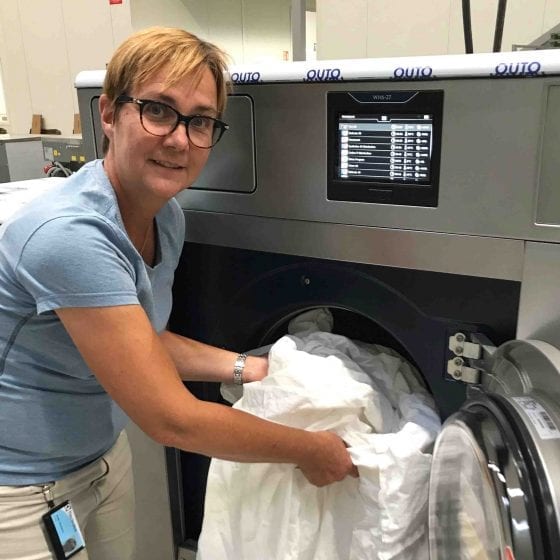In June 2018, the research project MinShed started with the aim of mapping microplastics emissions from the textile industry. The project lasts for three years and is a collaboration between companies, universities and research institutes. One of the participating companies is Electrolux Professional and the The Research Hub initiative.
“It is an incredibly important project where our goal is to look at solutions in the washing process that can contribute to reduced emissions,” says Anette Johansson, washing process expert at The Research Hub by Electrolux Professional.
Research has established that microplastics are a growing problem for the environment, and their emissions are increasingly contaminating our oceans. However, what is not entirely known is how microplastics actually come out in nature and what role the washing process of textiles plays in the context. Therefore, the Rise Research Institute of Sweden started the MinShed project, funded by the FORMAS research council. The project aims to bring the textile industry together with research institutes, universities and other companies to map the emissions and come up with various innovative solutions to the problem. The goal is to increase knowledge in the textile industry in order to be able to design clothes that do not release microplastics in the future, and to investigate potential solutions in the washing process to prevent emissions. In addition to Electrolux Professional, companies and universities such as Filippa K, Fjällräven, H&M, Ikea, Chalmers University of Technology and the Textile University in Borås also participate in the project. Anette Johansson works at Electrolux Professional’s development department and says that her main task is to map the role of the washing process.

Anette Johansson, washing process expert at The Research Hub by Electrolux Professional.
The Research Hub and HSB Living Lab
Since Electrolux Professional is at the forefront when it comes to sustainability issues, the microplastics project is important for the company. They invest heavily in research in the area of laundry and the environment and are constantly developing their products to minimize environmental impact. Through the initiative The Research Hub by Electrolux Professional, research is conducted in collaboration with universities, research institutes and companies in a larger context. For the MinShed project, a number of academic work from students and research students at The Research Hub’s partner university has been reported, with the aim of adding new approaches and analyzes to verify results. In addition, part of the research is conducted at the living research lab HSB Living Lab on the Chalmers campus in Gothenburg.
– Emissions of microplastics are a very complex topic that we must tackle from several directions. Since the project started, we have learned a lot at the same time as we have also found some challenges. Above all, the goal is that we will gain more knowledge about microplastics in order to be able to identify potential solutions, concludes Anette Johansson.
Read more about MinShed here.
Read more about The Research Hub here.
About HSB Living Lab
HSB Living Lab (HSB LL) in Gothenburg is a vibrant research lab and residential building, where the municipality, the business community and the research community work together to find sustainable solutions for future housing. Participants in the project are the City of Gothenburg, Electrolux Professional, together with a number of other companies from the business community, as well as Chalmers University of Technology. Today, HSB LL consists of 29 apartments where the residents are students, HSB members or researchers. The house is a four-story mobile building and the project is world-unique. For 10 years, new technological and architectural innovations will be tested, focusing on social, economic and ecological sustainability.
Read more about HSB Living Lab here.
